Sometimes, you really need to turn around
Sony a7r + Zeiss Loxia 21mm f/2.8 | @ f/2.8 20-seconds, ISO 6400
It was a Saturday night in June of 2016 and I had nothing going on, so I thought I’d pack up my gear and head out for a quick/local adventure to see what shooting up on Snoqualmie Pass was like. It’s the closest area to shoot from Seattle at probably 60-75 minutes from my place, but being so close to Seattle and with a fair amount of little cities nearby it was bound to be fairly light polluted. Or, at least, that’s what I thought…
I arrived around 11pm and much to my surprise, the skies were pretty dark and you could see a lot of stars. You could definitely tell there was light pollution but I could make this work, and so I went from “I’m bored, I guess we’ll try Lake Easton” to “I wish I’d planned this out better, it’s actually pretty good up here.”
I decided to hike a little ways from the parking lot to the bridge that runs parallel to I-90 and began shooting the Milky Way. Not the best composition but it worked. The light pollution in the distance bouncing off the clouds actually made a nice glow on the lake and with a 14mm and 21mm lens, I was able to grab a couple different perspectives and both turned out nicely. I experimented with some new techniques and equipment and the weather was nice so it ended up being a fun few hours shooting.
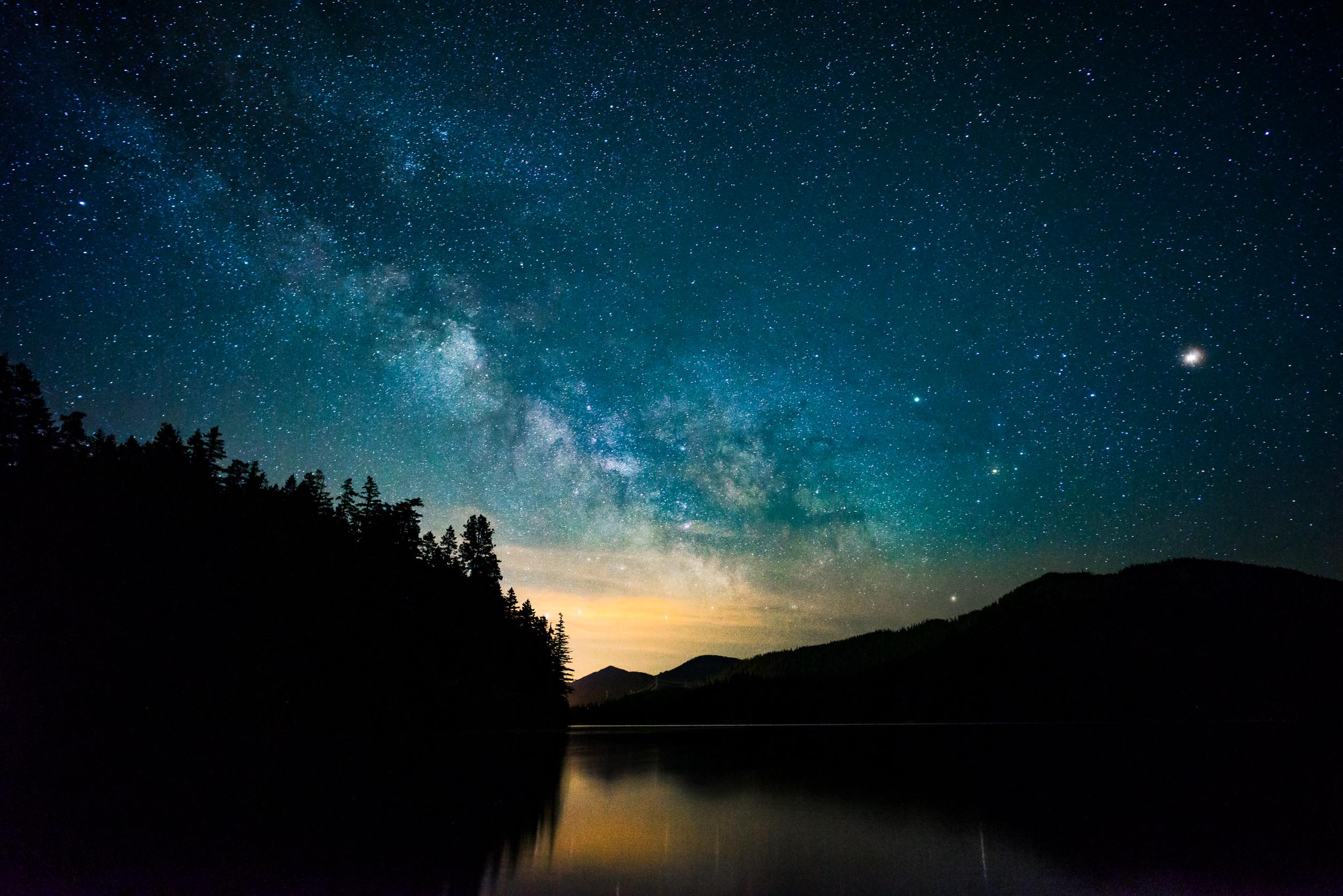
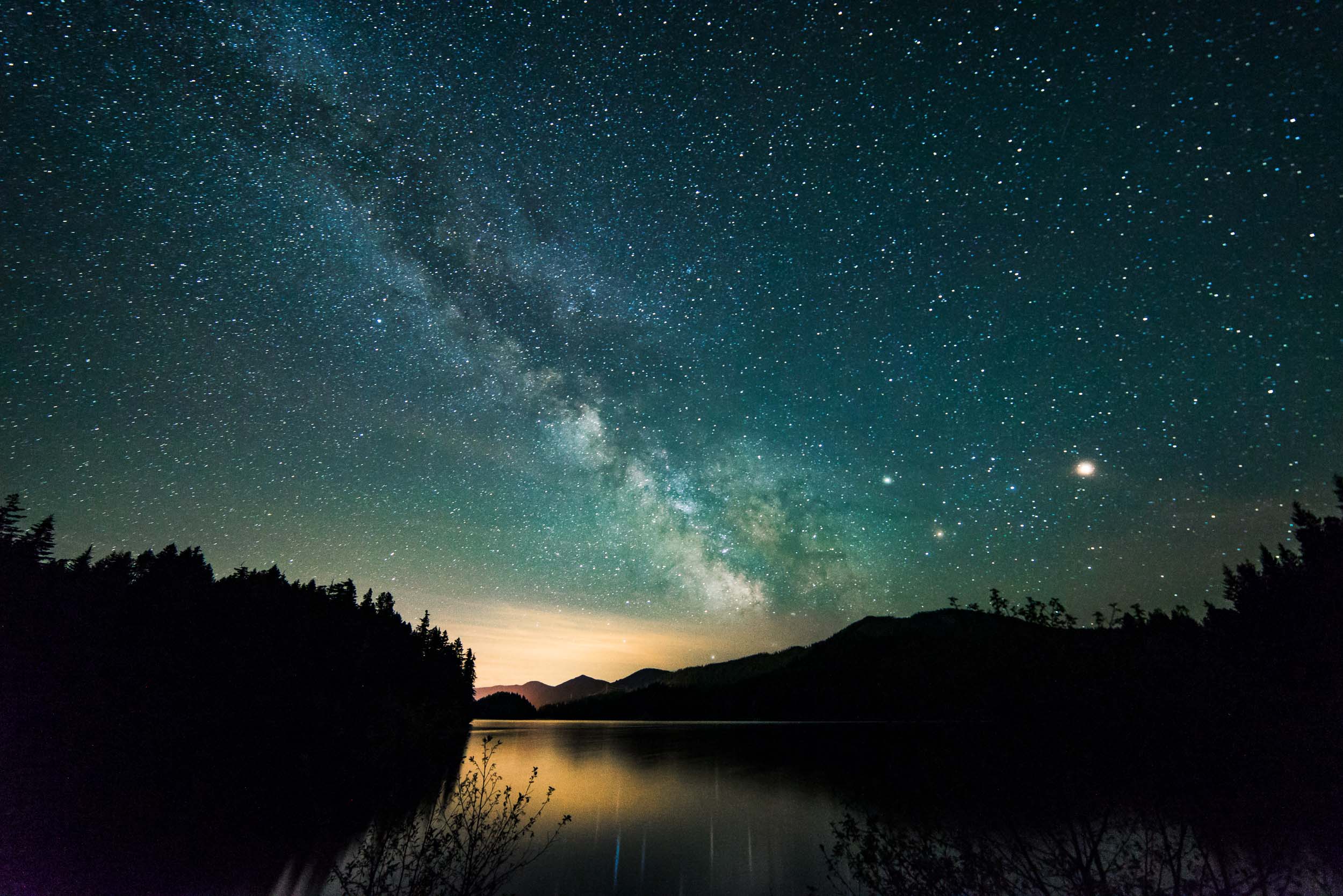
It was 2:14am and the Milky Way wasn’t going to give me anything else so with I-90 just 40-50 yards away, I turned the camera 180 degrees and decided to shoot the light trails from the cars/trucks whizzing by and when the first frame came back I was super stoked. The headlights/taillights looked killer and the reflection off the lake with stars above was exactly what I was looking to capture. But when I looked deeper and zoomed in, I froze. The image below is unedited and exactly as it came back on the LCD.
Do you see it, peeking over the mountain from the center to the right of the frame? After looking at the image zoomed in I quickly looked up at the mountain and saw it with my own eyes: a faint aurora, purple in color. Here, this far South?? In a light polluted area?? Hot damn, it’s go time.
I changed batteries and memory cards and recomposed the scene so quickly I barely knew what was going on. I set the intervalometer to shoot an infinite # of frames so it would run until the battery ran out and connected it to the camera as quick as I could, took a test shot to ensure I had the composition right and when I did, I initiated the intervalometer and at 2:17am stepped back from the camera quickly with my arms in the air like I was on a cooking show as the timer hit 0:00.
For 1 hour and 13 minutes, every 21-seconds my camera took a 20-second exposure and with every passing car/truck that when by I smiled and nodded, knowing that I was capturing solid gold. Unfortunately, the aurora was fleeting and didn’t last long and I wondered how long it had been going on behind me as I experimented with different Milky Way compositions to the South, but it didn’t matter; I’d captured it and knew there would be some exceptional frames in there and once I got home and processed everything my hunches were confirmed as the intense purple peeking over the mountains against the blue in the sky and the passing light trails made what are easily some of the coolest frames I’ve ever captured.

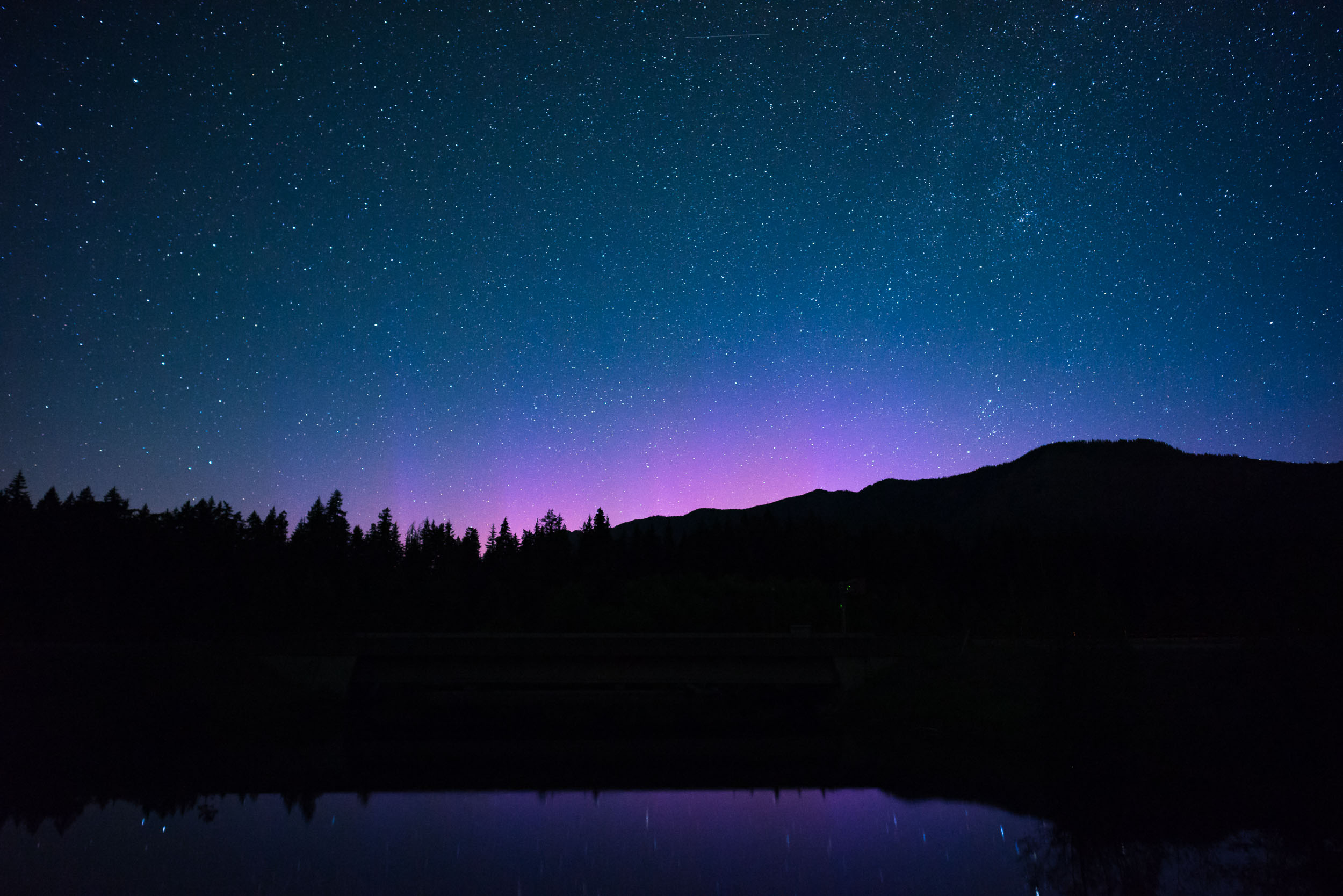
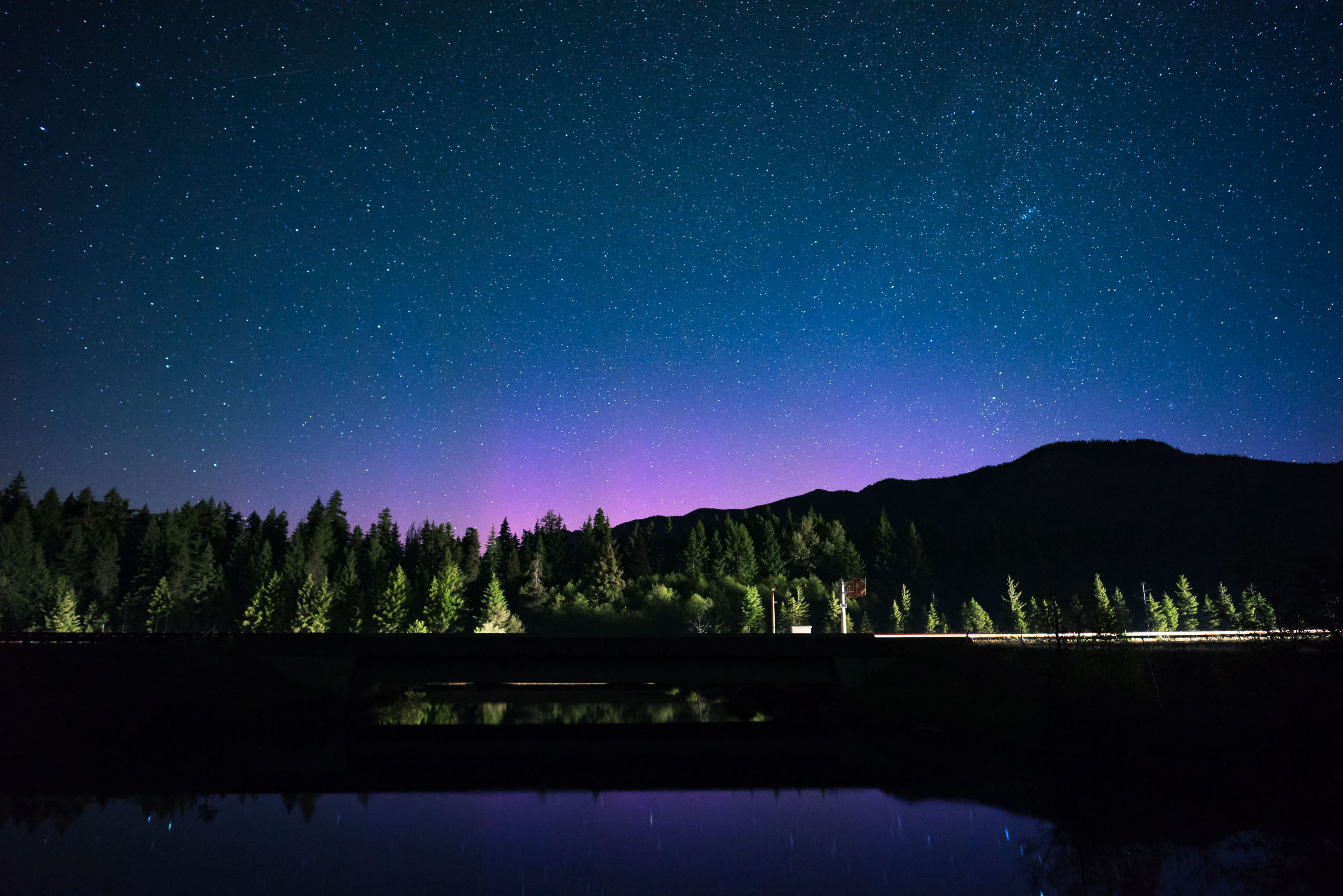
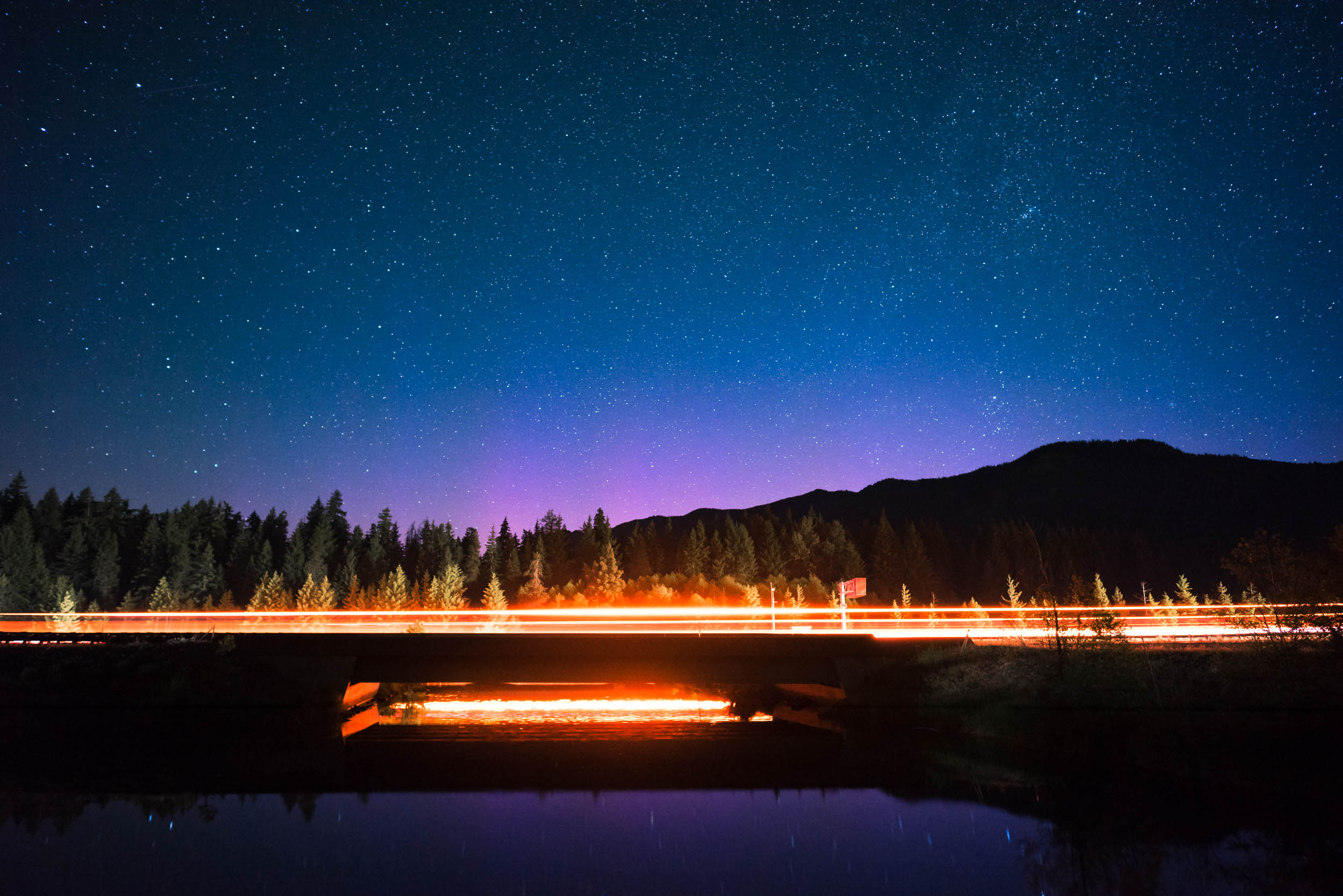

As twilight burned off and light started creeping into the sky, I knew everything would be super overexposed but didn’t care. In hindsight, I wish I’d adjusted the exposure as I went but the transition from night to day actually turned out looking pretty cool.
So the lessons learned that night were that Lake Easton is actually a pretty good place to shoot and that every few minutes you should look to the North no matter where you are as you might see a hidden Aurora Borealis…



